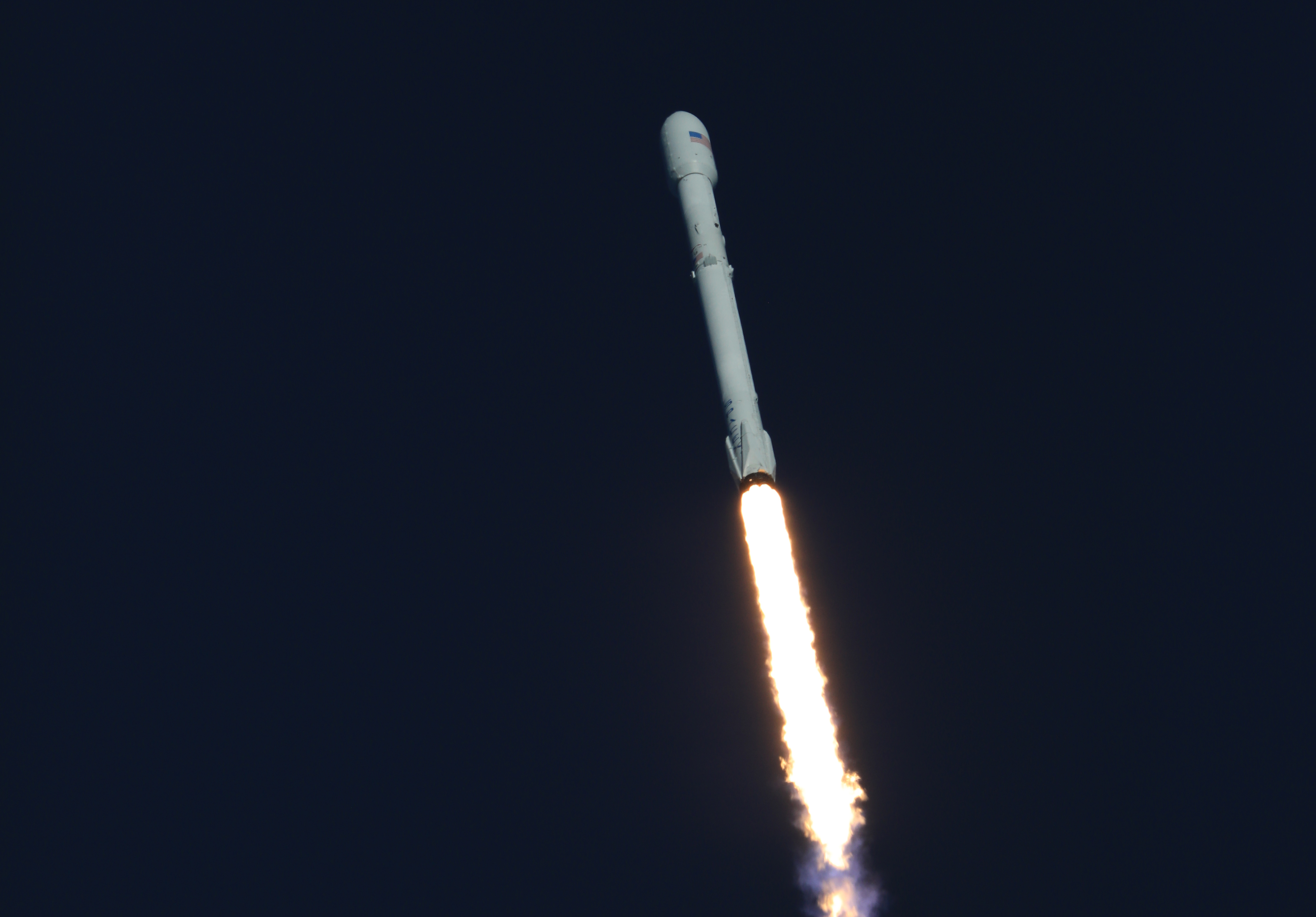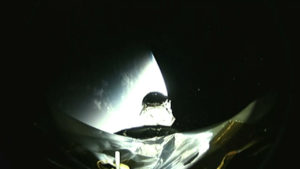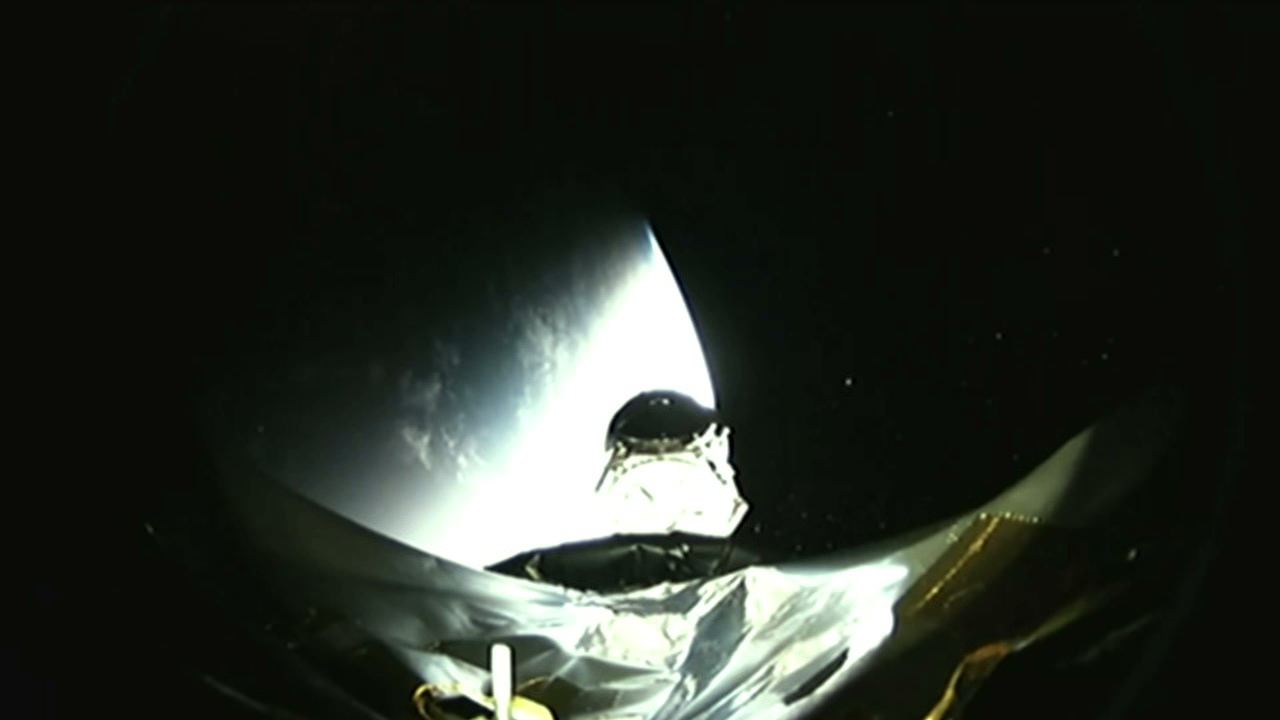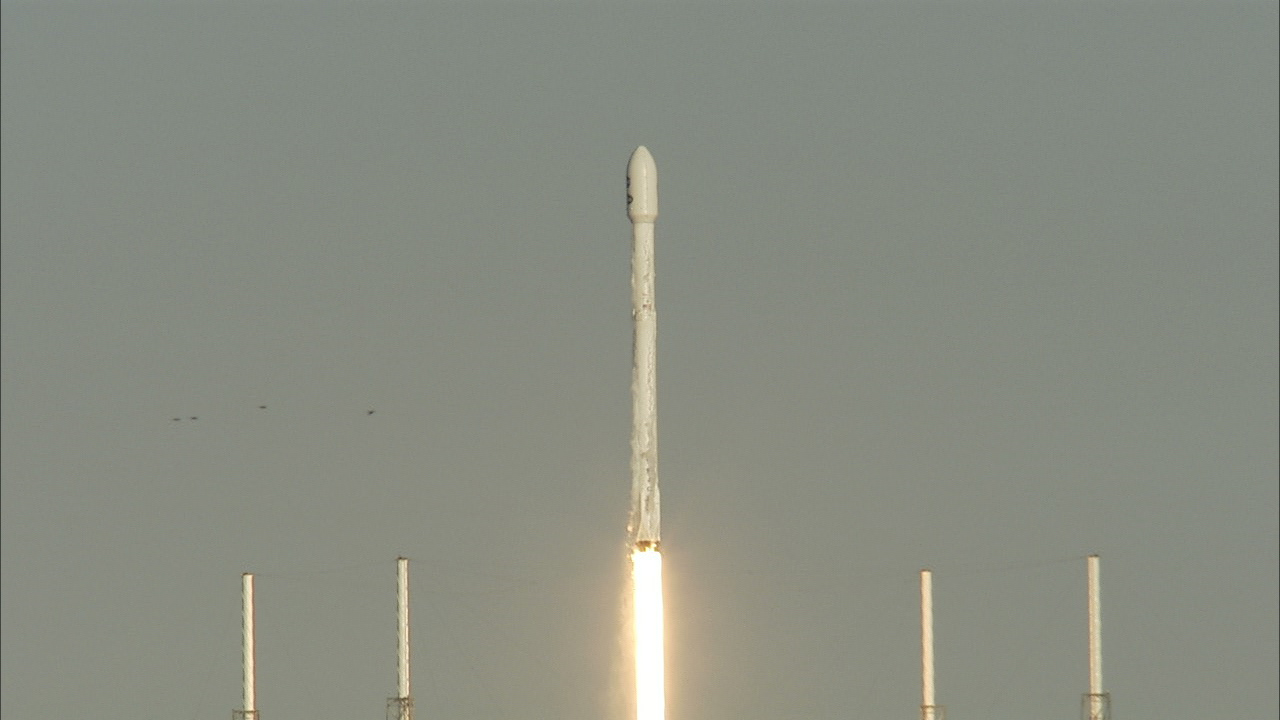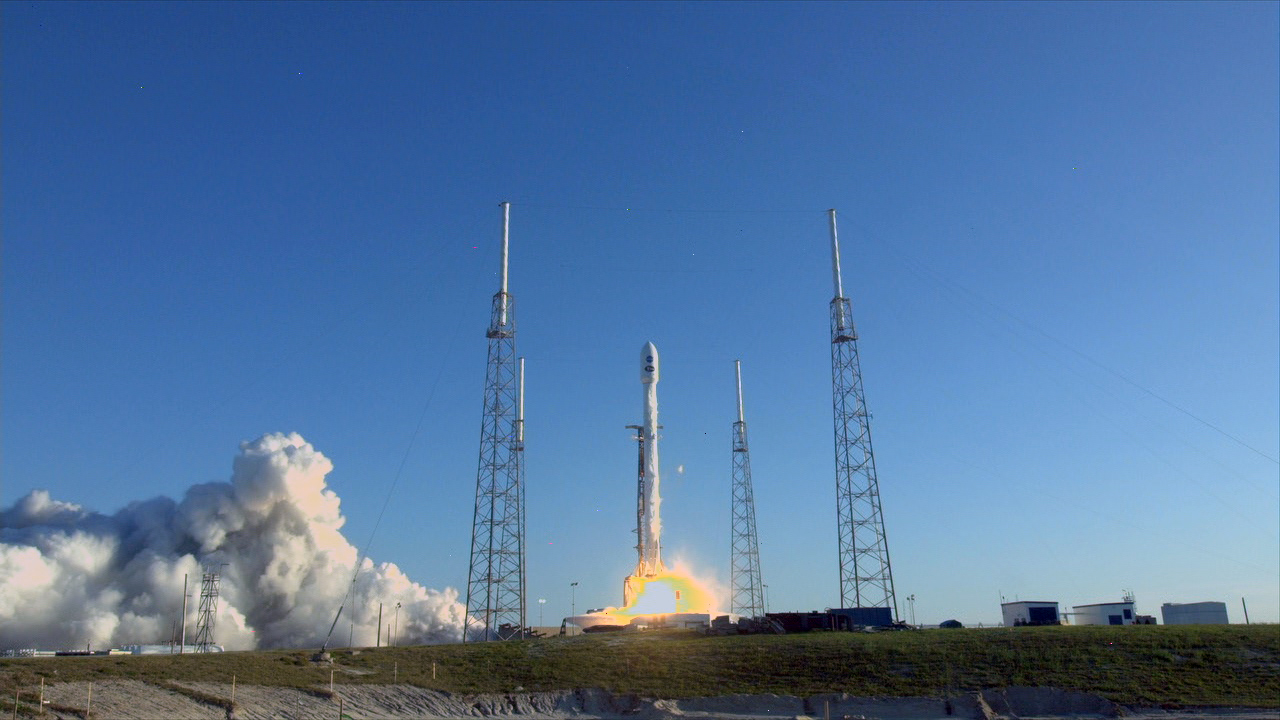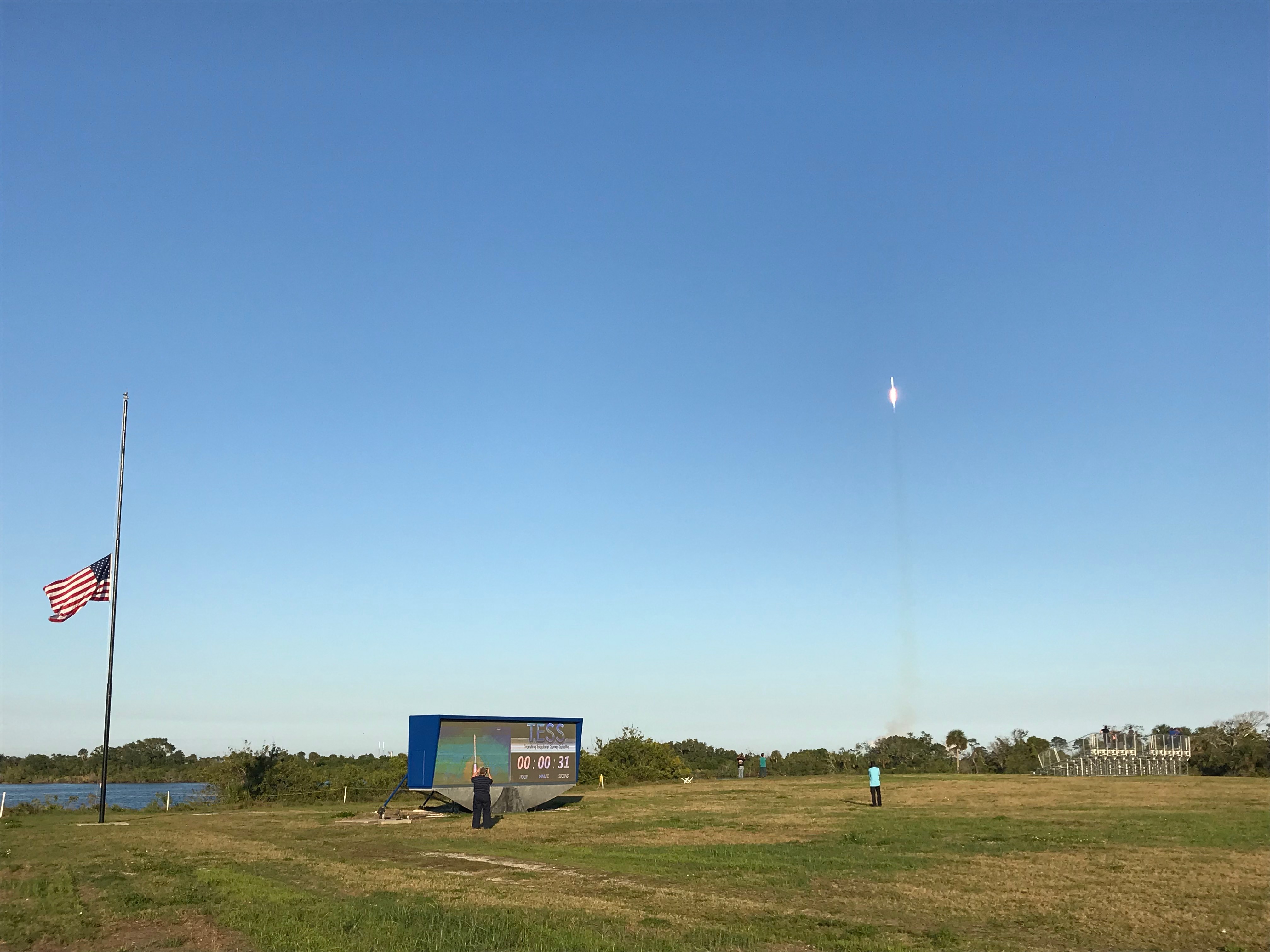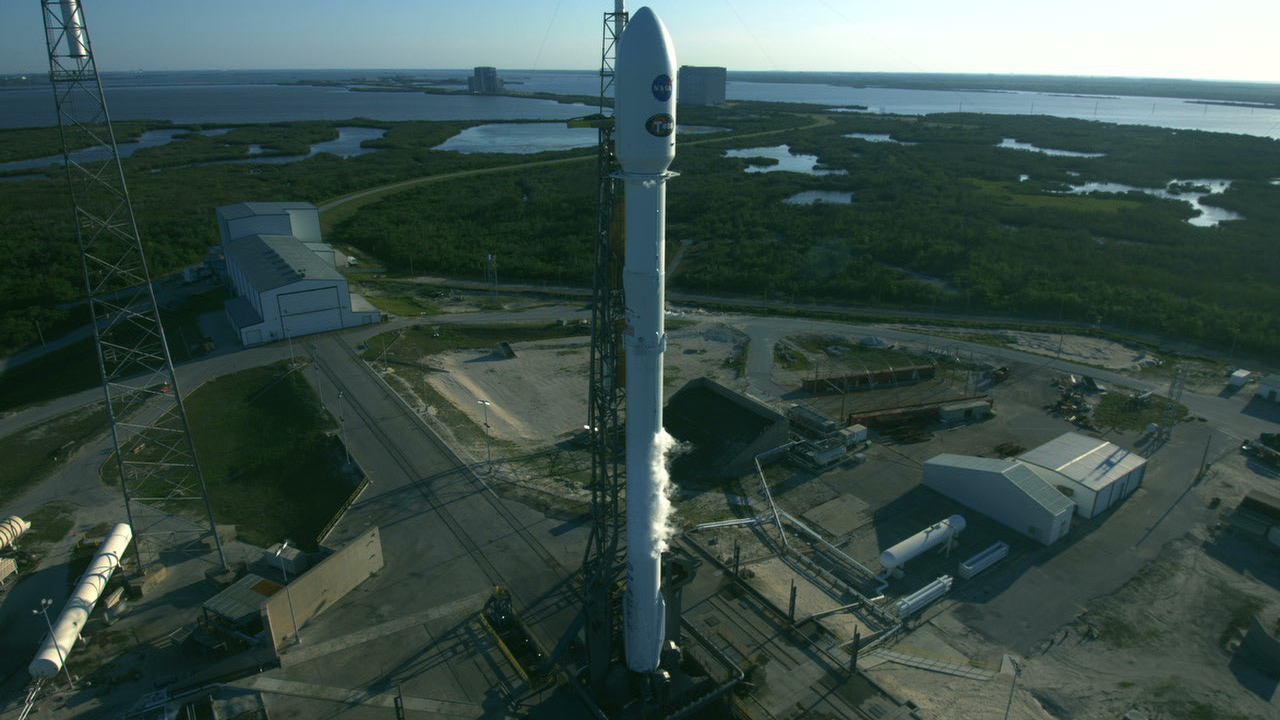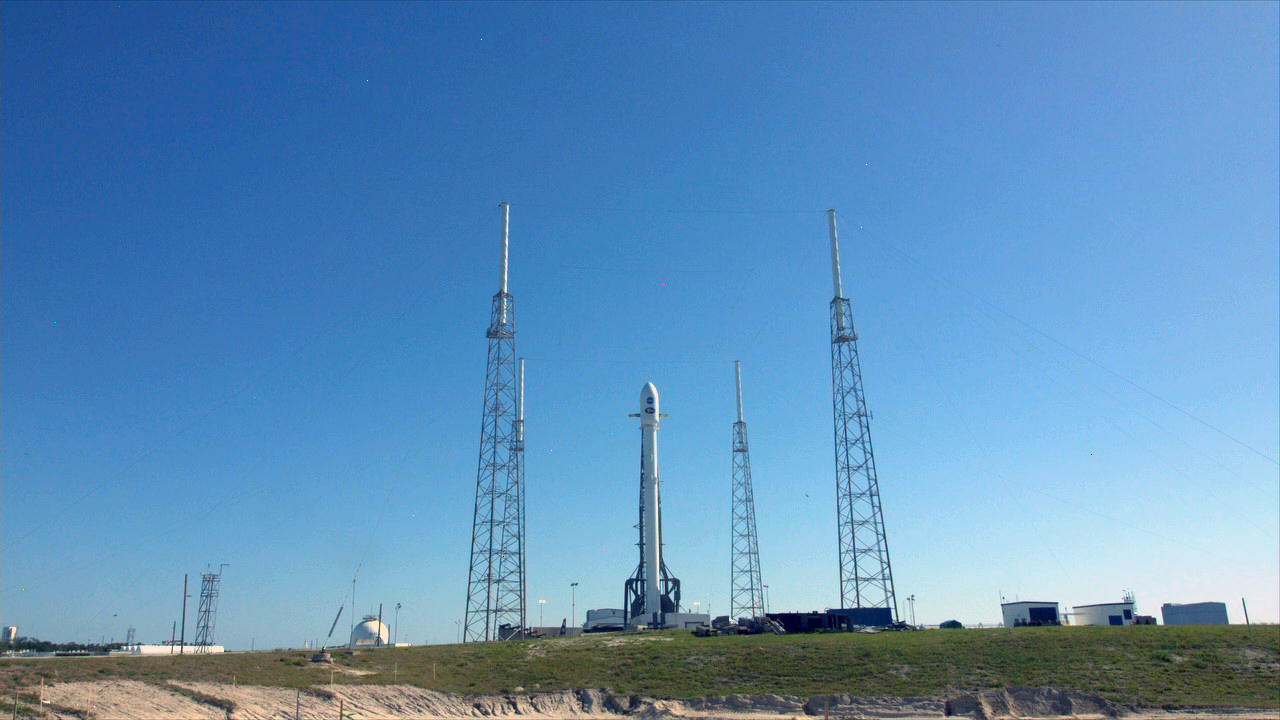TESS Mission (original) (raw)
A SpaceX Falcon 9 rocket soars upward after lifting off from Space Launch Complex 40 at Cape Canaveral Air Force Station in Florida, carrying NASA’s Transiting Exoplanet Survey Satellite (TESS). Liftoff was at 6:51 p.m. EDT. Photo credit: NASA/Kim Shiflett
NASA will have a new tool in the search for habitable planets.
The agency’s Transiting Exoplanet Survey Satellite was delivered to space this evening aboard a SpaceX Falcon 9 rocket that lifted off from Space Launch Complex 40 at Cape Canaveral Air Force Station in Florida. Launch occurred right on time at 6:51 p.m. EDT following an uneventful countdown highlighted by excellent weather and healthy hardware.
“Liftoff of the SpaceX Falcon 9 rocket carrying TESS, a planet-hunting spacecraft that will search for new worlds beyond our solar system,” NASA Launch Commentator Josh Finch said as the rocket thundered away from the launch complex.
TESS will be the first space-based, all-sky surveyor to search for exoplanets – planets outside of our own solar system. However, the spacecraft isn’t looking for just any planets. It’s specifically searching for those that are Earth-like, and close enough to our own celestial neighborhood that scientists can study them further.
“We are thrilled TESS is on its way to help us discover worlds we have yet to imagine, worlds that could possibly be habitable, or harbor life,” said Thomas Zurbuchen, associate administrator of NASA’s Science Mission Directorate in Washington.
How will it find these planets? Like the Kepler mission before it, TESS will use the transit method – that is, it will stare intently at the stars in a given section of the sky, watching for the telltale flicker of a passing (transiting) planet. (Learn more about TESS and the transit method on the TESS Overview.) Kepler, which launched in 2009, focused on one portion of the sky and sought to find Earth-like planets. TESS, on the other hand, will look for stars 30 to 100 times brighter than those observed by Kepler. It also will scan a far larger area.
In this view from a camera mounted on the Falcon 9 rocket’s second stage, NASA’s TESS spacecraft separates from the vehicle, beginning its mission. Image credit: NASA TV
But first, TESS had to get off the ground. After liftoff, the Falcon 9 rocket performed well, sending the spacecraft on its way to orbit. At 7:53 p.m., the twin solar arrays that will power the spacecraft successfully deployed.
“Wow, are we excited. We just had a perfect countdown and perfect launch of the TESS mission,” said Tim Dunn of NASA’s Launch Services Program. “The Falcon 9 continues to demonstrate what a reliable vehicle it has become,” Dunn said.
Over the course of several weeks, TESS will use six thruster burns to travel in a series of progressively elongated orbits to reach the Moon, which will provide a gravitational assist so that TESS can transfer into its 13.7-day final science orbit around Earth. After approximately 60 days of check-out and instrument testing, the spacecraft will begin its work.
The twin solar arrays on NASA’s Transiting Exoplanet Survey Satellite have deployed and are drawing power.
In this view from a camera mounted on the Falcon 9 rocket’s second stage, NASA’s TESS spacecraft separates from the vehicle, beginning its mission. Image credit: NASA TV
NASA’s Transiting Exoplanet Survey Satellite, or TESS, is flying free following an on-time liftoff and successful journey to orbit aboard a SpaceX Falcon 9 rocket. The spacecraft has separated from the rocket’s second stage. Once TESS deploys its twin power-producing solar arrays, it will spend the next two months climbing to its final orbit high above Earth.
The Falcon 9 rocket’s second-stage Merlin engine completed its brief burn – lasting just under a minute – positioning TESS for separation from the vehicle coming up.
The second stage of the SpaceX Falcon 9 rocket and the attached TESS spacecraft are in a coast phase following an on-time liftoff at 6:51 p.m. EDT. Coming up, the second-stage engine will ignite one more time at about 43 minutes into the flight. That burn, lasting only about a minute, will pave the way for TESS spacecraft separation at a mission-elapsed time of about 49 minutes.
Here’s another look at today’s launch:
Liftoff of the SpaceX Falcon 9 rocket carrying NASA’s TESS spacecraft. Image credit: NASA TV
Liftoff of the SpaceX Falcon 9 rocket carrying NASA’s TESS spacecraft. Image credit: NASA TV
The Falcon 9 first stage completed its burn and has successfully landed on the SpaceX drone ship affectionately called, “Of Course I Still Love You,” which waited for it in the Atlantic. Meanwhile, the second stage’s first burn is complete and the vehicle has started a 32-minute coast phase. The payload fairing separated from the vehicle as expected minutes ago, leaving the TESS spacecraft exposed to space.
Liftoff of the SpaceX Falcon 9 rocket carrying NASA’s TESS spacecraft. Image credit: NASA/Dan Casper
Liftoff of the SpaceX Falcon 9 rocket carrying NASA’s TESS spacecraft on a mission to help search for planets outside our solar system that could be capable of harboring life.
The Falcon 9’s nine Merlin engines are generating more than 1.7 million pounds of thrust – providing the initial boost TESS needs to break the hold of Earth’s gravity.
Just over a minute from now, the rocket will fly through the area of maximum aerodynamic pressure known as “max Q.” About two and a half minutes into the flight, the first stage will complete its burn and separate from the vehicle, clearing the way for the second-stage engine to ignite. The payload fairing will deploy shortly thereafter.
The SpaceX Falcon 9 rocket set to launch NASA’s TESS spacecraft stands at Space Launch Complex 40 on Cape Canaveral Air Force Station. Image credit: NASA
NASA’s TESS spacecraft is already running on internal power and the rocket will transition to internal power in the next few minutes. There are several other significant milestones coming up between now and launch — the rocket’s engines will be chilled and its onboard propellant tanks pressurized, and the gantry-like strongback structure will be retracted from the rocket’s side.
Weather is expected to cooperate with NASA’s and SpaceX’s launch plans this evening. According to the U.S. Air Force’s 45th Weather Squadron, there is less than a 10 percent chance of conditions violating launch rules, meaning the weather is 90 percent “go” for launch.
Launch-watchers gathered at viewing areas across Florida’s Space Coast are being treated to clear skies and temperatures in the low 70s as the countdown continues. Liftoff of NASA’s TESS spacecraft aboard a SpaceX Falcon 9 rocket remains scheduled for 6:51 p.m., the opening of a 30-second launch window.
The SpaceX Falcon 9 rocket set to launch NASA’s TESS spacecraft stands at Space Launch Complex 40 on Cape Canaveral Air Force Station. Image credit: NASA
Countdown clocks are ticking at Cape Canaveral Air Force Station in Florida as NASA’s next planet-hunting spacecraft awaits liftoff aboard a Falcon 9 rocket at 6:51 p.m. EDT. The launch window extends for 30 seconds.
When a planet crosses in front of the star it’s orbiting, that event is called a transit – and the telltale sign of a transit is a short-lived drop in the brightness of that star’s light. NASA’s Transiting Exoplanet Survey Satellite, or TESS, is heading into high Earth orbit, where it will rely on the transit method to locate terrestrial planets that are outside our solar system, but close enough to study with ground-based telescopes. Check out NASA’s TESS Mission Overview for more about the transit method of detecting planets.
The TESS blog originates from the NASA News Center at Kennedy Space Center just a few miles west of the launch complex. Times are provided in Eastern.
There’s more to come from the countdown, so stay with us.
